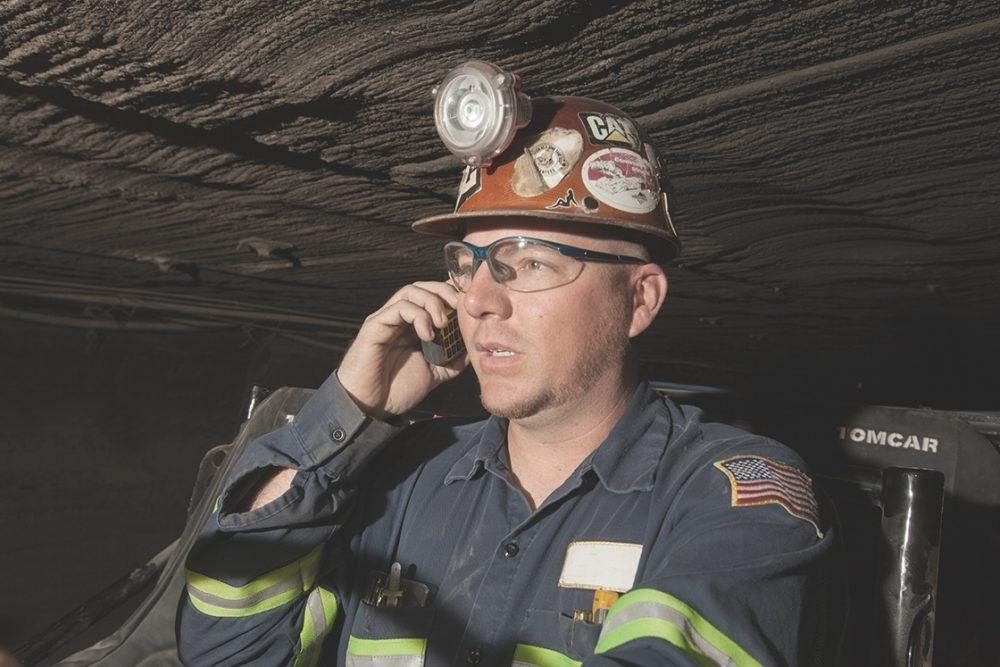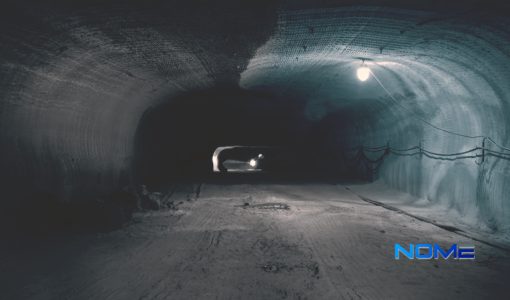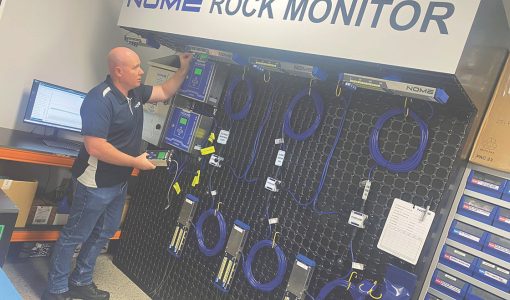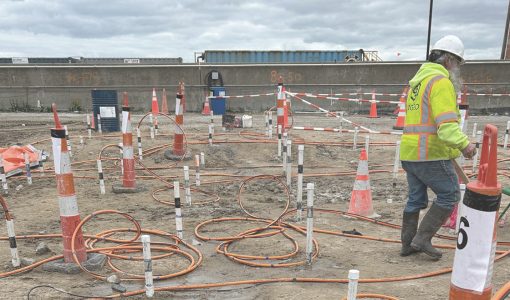Mine operators are discovering that robust digital underground communications systems are vital to meeting production demands. Designers and engineers of modern mines will tell you that merely meeting the minimum compliance standards for workplace safety regarding underground communication is a missed opportunity. Updated mine communication systems can go beyond compliance by improving operations data and real-time production status resulting in greater production efficiency, improved machine learning datasets, and even more robust safety.
Mine Communication and Data Collection
No two mines are the same and communications systems need to be tailored to these differences. Providers of one-size-fits-all underground communication solutions may not be able to deliver on every capability within the system. Studies of the physical characteristics of underground mines reveal the impact on which communication systems will be used for underground mining. Regardless of whether it is a mine face, drift or entry, the presence of some minerals (coal, limestone, iron, etc.) differs from the perspective of radio communications. The electromagnetic characteristics of each mineral impact dielectricity and conductivity. Moreover, the difference between excavation styles (room and pillar, longwall, stope, etc.) is a major consideration in both the installation of the communication infrastructure and the behavior of radio transmissions inside mine galleries. [2]
A customized communication system tailored specifically to the needs of the underground environment improves coordination and helps make operations more adaptive to sudden changes in production or safety. This not only includes communication between humans but also automated or mechanical systems.
“Improving the data collected within the mine influences several production factors when it comes to reporting, alerting, and workflows,” said Rob Albinger, General Manager of StrataConnect, Strata Worldwide. “Where we’ve seen significant improvements is in data collection. If data sets are correctly aggregated, they inform machine learning software which can then be used to advance operational efficiency and safely increase production.”
Production data can now be collected from multiple sources including machinery, automated systems, conveyors, proximity sensors, dust detectors, etc. This data can be aggregated and leveraged to reveal inefficiencies in production. When paired with machine learning models, operations can make slight adjustments that have a significant impact on production volumes and causes/remedies to downtime resulting in a lower cost of operation.
Reliable Underground Communications
“Choppy, staticky, or garbled communications reduce efficiency and safety,” said Albinger. “Clear and consistent connections ensure that sections and workfaces are coordinated, and instructions are understood. Well-engineered and designed underground communication networks anticipate safety issues and expand with the mine.”
Traits & Requirements for Safe Mining Communications Equipment | |
Trait | Requirement |
Workplace Safety | Resistant to short circuits, voltage surges, and high operational heat levels that could injure users. |
Sealed from Outside Elements | Sealed against high humidity and moisture, protected from wide outer temperature fluctuations, sealed from dust, and ensures internal/external components remain protected against corrosion. |
Size | Light weight, easy to carry (personal), unobtrusive to the working environment, and easy to mount & position. |
Design | Rugged, shock proof, low-scratch/no-fog display, easy to use and understand. |
Reliability | Long battery life, good reception, and able to reach far to receivers. |
From corrosive gases to gritty fine dust, the punishing mining environment can quickly render common consumer equipment useless. This also applies to cables, relays, terminals, couplers, dividers, converters, etc. A breakdown in the constituents of the network can result in lost communication across the network, creating a risk exposure. High-quality equipment and underground mobile devices are easier to maintain, experience significantly less downtime due to equipment failure, retain more reliable connections, and provide a longer equipment life.
Customizable Mine Communication Networks
StrataConnect mining communication solutions are a customizable variety of wired and wireless technologies that combine functionality, redundancy, and economics to produce seamless underground networks.
Is a wireless battery-powered mesh network of nodes that interconnect and interface with a centralized communications hub, creating a complete personnel tracking and communication system. This wireless system provides a real-time awareness of underground operations and working conditions. The nodes are strategically hung from the mine roof, based on the unique configuration of each mine. These nodes communicate with each other forming a redundant relay network that pulls data and comms from the depths of the mine to the surface instantly.
Powerful enough to handle up to 1000 connections at a time including trackers, communicators, and safety sensors. Handheld, rugged, and easy to read display devices, provide individual miners with a personal connection. A digital mine map tracks the movement of these devices, displaying their whereabouts and direction of travel underground in real time.
The StrataConnect Server and Graphical User Interface (GUI) are at the heart of Strata’s communication system. These facilitate communication between surface and underground operations. From text messages to gas detection alerts, StrataConnect consolidates communication and control into a central platform that is user friendly to monitor and manage. It is an operator’s most important safety tool for monitoring the day-to-day mining operations and location of personnel, receiving early detection of dangers and the ability to issue mine-wide alerts with the push of a button.
DigitalBRIDGE is an underground network solution that is designed to be added to an existing fiber network. It provides the speeds and capabilities of fiber with the additional benefit of delivering power to connected devices placed anywhere along the network. The technology:
- Extends fiber to expand digital connection into active working sections or the “last mile”
- Carries power and data in single cable
- Simplifies network installation for reaching all areas of the mine
For integration into existing fiber networks, the DigitalBRIDGE Portal is installed nearby any fiber switch and power station to bridge high speed data over to coaxial cable and insert DC power. Then, using standard tools, onsite personnel can tap into DigitalBRIDGE coax at any point along the line to install Ethernet devices or split the network into multiple directions. The DigitalBRIDGE Quadport2 enables Power-over-Ethernet (PoE) connection of up to four end-point devices, such as Wi-Fi access for voice, highspeed data and telemetry, Internet Protocol (IP) cameras, and Programmable Logic Controller (PLC) units for the monitoring and remote control of fans, conveyor belts, pumps, and refuge chambers.
StrataConnect DigitalBRIDGE Plus+™
DigitalBRIDGE Plus+ digitizes leaky feeder systems to integrate technologies for high-speed Power-over-Ethernet (PoE) connectivity, without affecting VHF radio frequencies. Strata technicians can customize the most advanced leaky feeder network on the market based on the specific needs of each operation. Ethernet can be inserted at the head end to run throughout the underground network as long as DigitalBRIDGE Plus+ line amplifiers are used, or it can be integrated underground by bridging digital data from existing fiber networks onto the leaky feeder cable. This connection is created via a DigitalBRIDGE Plus+ line amplifier with Ethernet. Ethernet end-point devices can then be installed anywhere along the digitized leaky feeder cable, receiving power and data connection through the DigitalBRIDGE Plus+ Quadport2. DigitalBRIDGE Plus+ line amplifiers are required to transverse the digital signals along the cable where Ethernet access is needed. In areas where no Ethernet access is required, operations can continue to use existing line amps.
Once an operation has established a strong backbone of digitized leaky feeder, the network supports high-speed Ethernet data for voice, Wi-Fi, personnel and equipment tracking, system automation, IoT processes, and tele-remote. DigitalBRIDGE Plus+ also supports both Digital Mobile Radio (DMR) and Land Mobile Radio (LMR) solutions for underground operations.
The StrataConnect IoT Gateway, developed by Strata for the most robust and advanced needs in underground connectivity, supports open standard high-speed Wi-Fi, Bluetooth® and LoRa®. It can be integrated into any existing underground infrastructure including fiber optics, Ethernet, DigitalBRIDGE coaxial and DigitalBRIDGE Plus+ leaky feeder and establishes a reliable wireless coverage area of up to 2,000 meters/6,500 feet per gateway node. This coverage is easily expanded with the extension of the network and placements of additional nodes.
High speed, high capacity
StrataConnect networks provide a signal and digital pathway for devices such as sensors to connect, upload real-time data, and be controlled remotely, i.e., the internet of things (IoT). It is important to have high bandwidth from Wi-Fi access points and PoE IoT field devices to enable large amounts of data to be carried through the system at once. Track the status of underground equipment and machinery through an integrated interface to improve equipment maintenance and operational life. This includes high-speed connectivity to live camera feeds and monitoring emergency refuge chambers.
Being connected to devices for monitoring, data, and alerts vastly improves workplace safety and could provide staff with the valuable seconds needed to react to accidents or seek shelter. For example, in most cases, conveyors travel faster than any other physical object in the mine. In the event of a conveyor fire, the speed of the belt can spread the fire quickly over long distances and even transfer the fire to other conveyors. Lives are saved when a sensor prompts the central monitoring hub to immediately stop the conveyor, alert fire crews, and instruct personnel in the area to put on the proper PPE.
Mines Require Modern Communication Solutions
The expectations of investors and the demand for mineral commodities have put pressure on mine operators to run lean and efficient outputs with more precise and up-to-date reporting. With StrataConnect options, Strata Worldwide offers the highest quality mining communication systems to the market. Every mine is unique, so we customize sophisticated solutions for optimum operations, improved safety, and greater production efficiency.
For more information, visit our website, or contact us here.



